by Nick Drew | Fri 05 Feb 2021
Rocking the Sea Defence Work
Towards the end of 2020 we paid a visit to our friends at Earlcoate Construction Ltd who specialise in sea defence work, to checkout the work they were doing at the coastal village of Milford on Sea, where we caught up with their number one man Mike Tanner and his coastal defence team.
As we have seen with many other coastal areas around the UK in recent years, a large section of the quay wall had suffered catastrophic damage during the horrendous winter storms last year, so much so that it had led to a significant collapse, the washing away of some beach huts and part of the gardens of some residential properties.
At one stage a Grade II listed property called the White House was under imminent danger of slipping into the sea too, all of which caused much concern from local residents and keen visitors who come to enjoy to enjoy the coastal walks which offer stunning views of the Isle of Wight and the Needles.
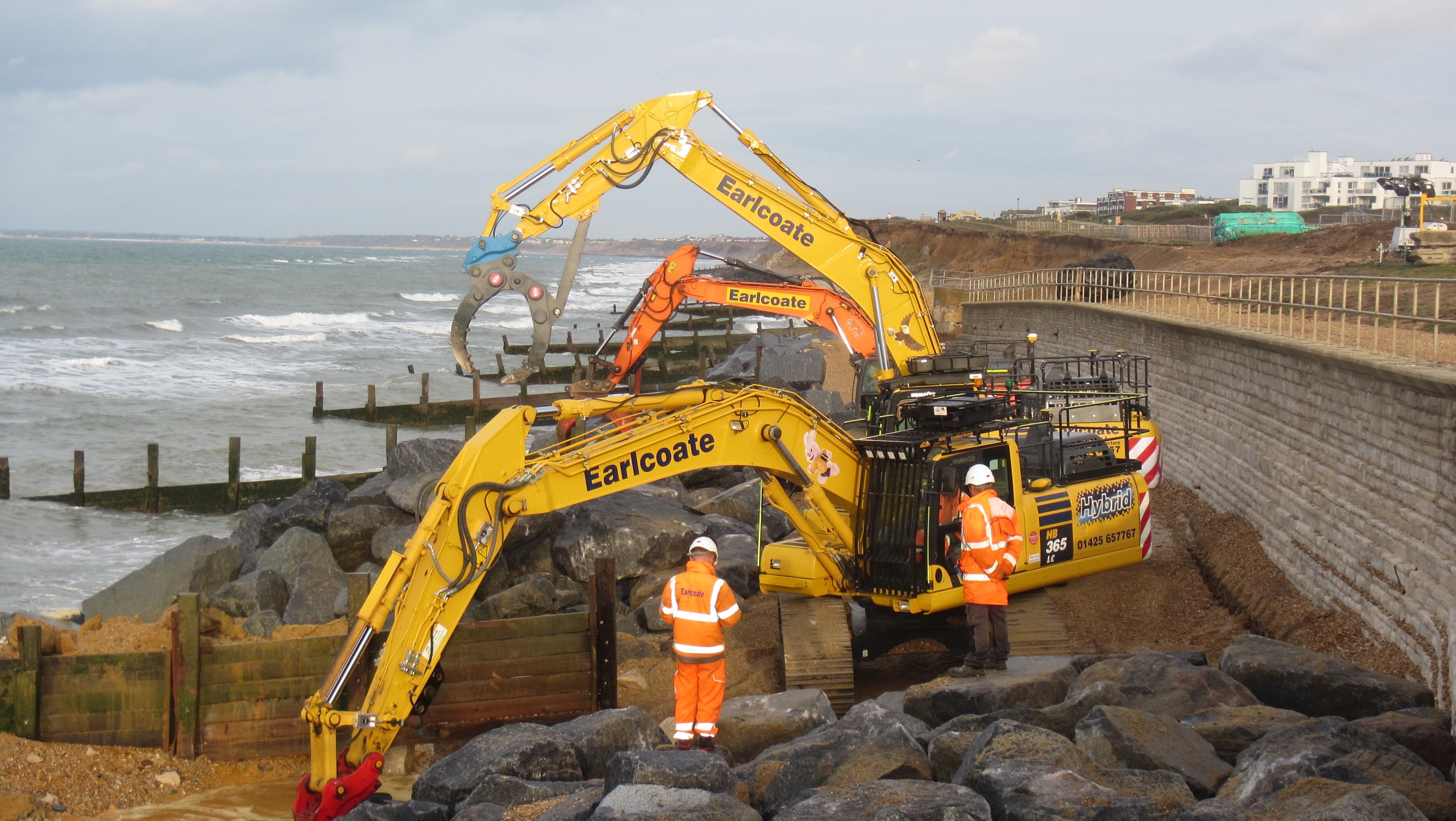
After some deliberating on funding the scheme and with help from the Environment Agency, New Forest District Council appointed Fordingbridge based Earlcoate Construction to begin work on the first phase of a £1.5m project, which will eventually revitalise the 180-metre section of the wall to the west of the White House.
Carol Whitfield the Coastal Engineer overseeing the works for New Forest District Council said, “These urgent works are effectively a “sticking plaster”, a temporary repair for the harsh winter months ahead, with the proposed phase two permanent solution taking place next year in the summer months”.
For this project Earlcoate has assigned some serious heavy kit, including at the beach front, a brand-new Komatsu PC490LC-11 with MST 5 tyne rock grab, Komatsu HB365LC Hybrid, and a Doosan DX380LC-5, these machines are supported by a Hitachi mini excavator, Volvo A25C ADT and a Komatsu PC290LC.
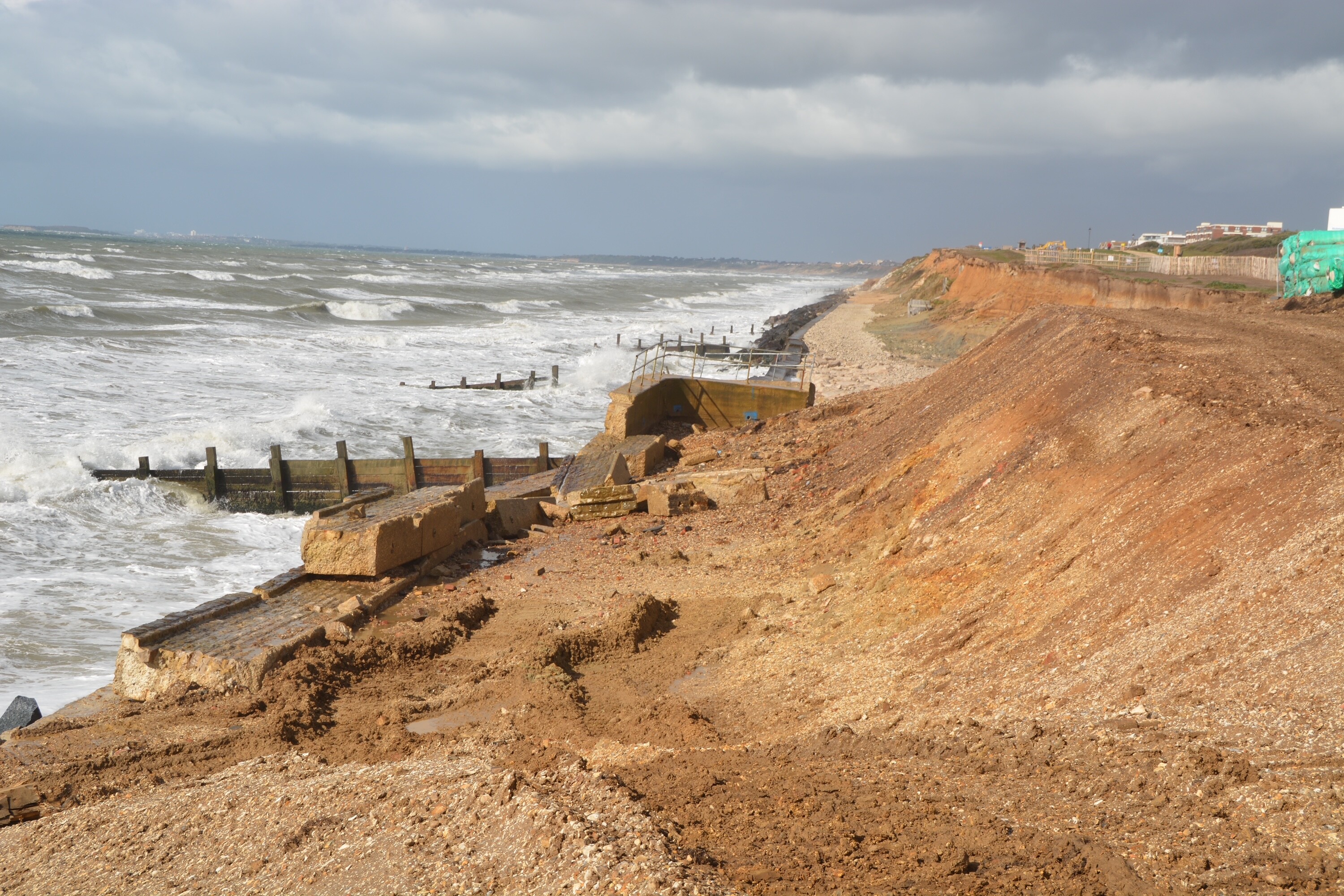
At Southampton Docks on the quayside they have a Komatsu PC600LC-8 and a Volvo L150C wheeled loading shovel and on the barge another Komatsu PC490LC-11.
Work started late in August and following the initial set up of offices and on-site accommodation for the operatives. Local Portland stone was brought in by road going transport to form an access road to the compound area and larger rock was used to form a track for machines and dump trucks down to the bottom of the cliff.
By mid-September piling for the wall stabilisation towards the White House had been completed, this was performed by Earlcoate’s Doosan DX380LC-5 equipped with a Movax vibratory piling hammer.
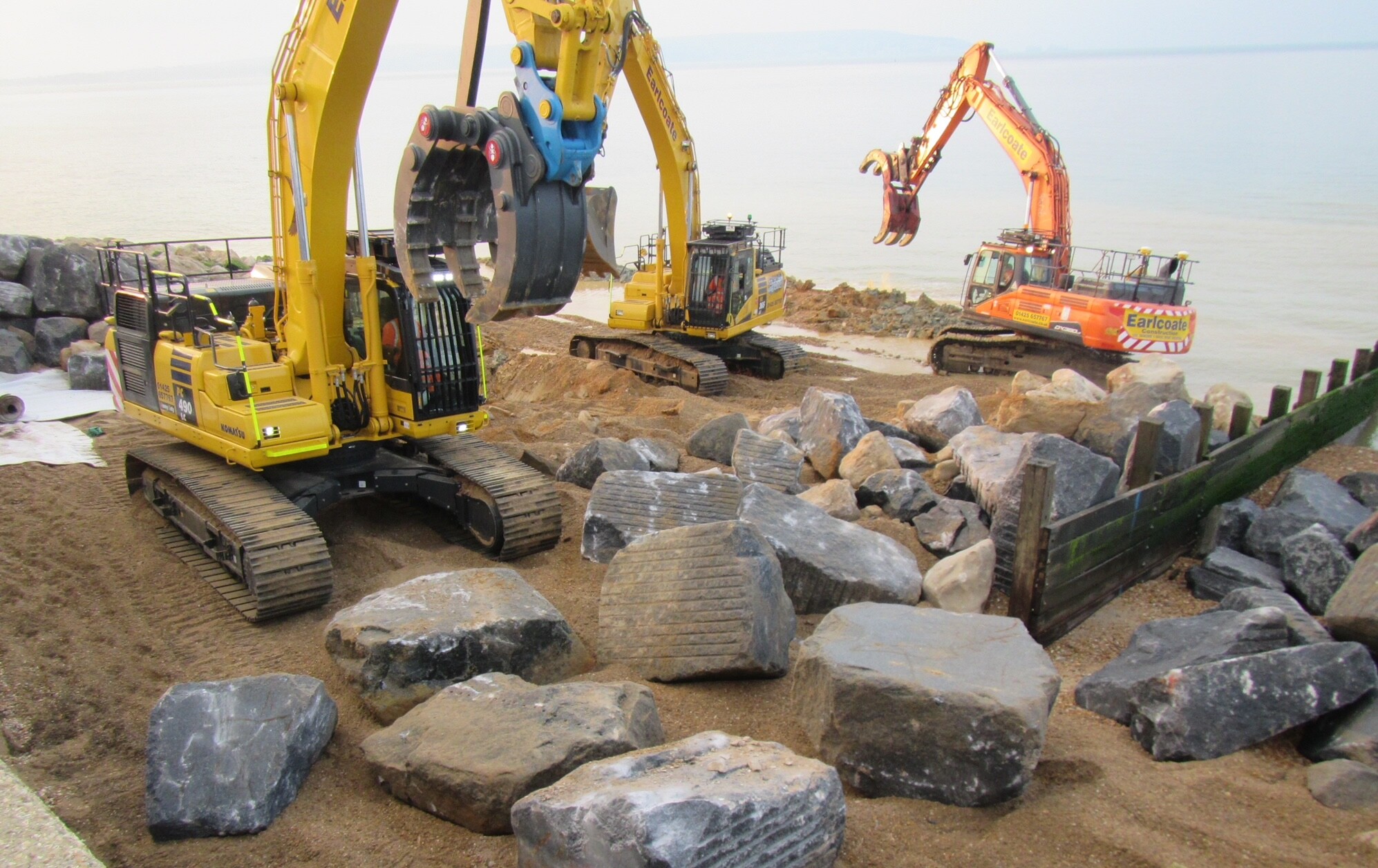
Drainage from local properties towards the sea wall was also conducted and final connections will be completed later on in the project.
NFDC ordered 9,000 tonnes of Norwegian Larvik granite which was delivered into Southampton Docks Berth 45 which has been hired to receive the rock from the Hagland Saga vessel. A protective mat was laid down on the floor of the quay consisting of geotextile, glass sand and crushed concrete to protect it from damage by dropped rocks.
Two loads have been delivered into the docks, the first was just over 4,500 tonnes with a further 4,500 tonnes following on. At the docks the granite rocks are placed onto the barge before its sets off for Milford on Sea along the coast.
Mick Tanner talked me through the procedure, “The tug, Afon Cefni tows the Searider barge loaded with around 350-tonnes of rock, down Southampton Water, around Hurst Spit and then waits offshore to catch the high tide at Milford on Sea.
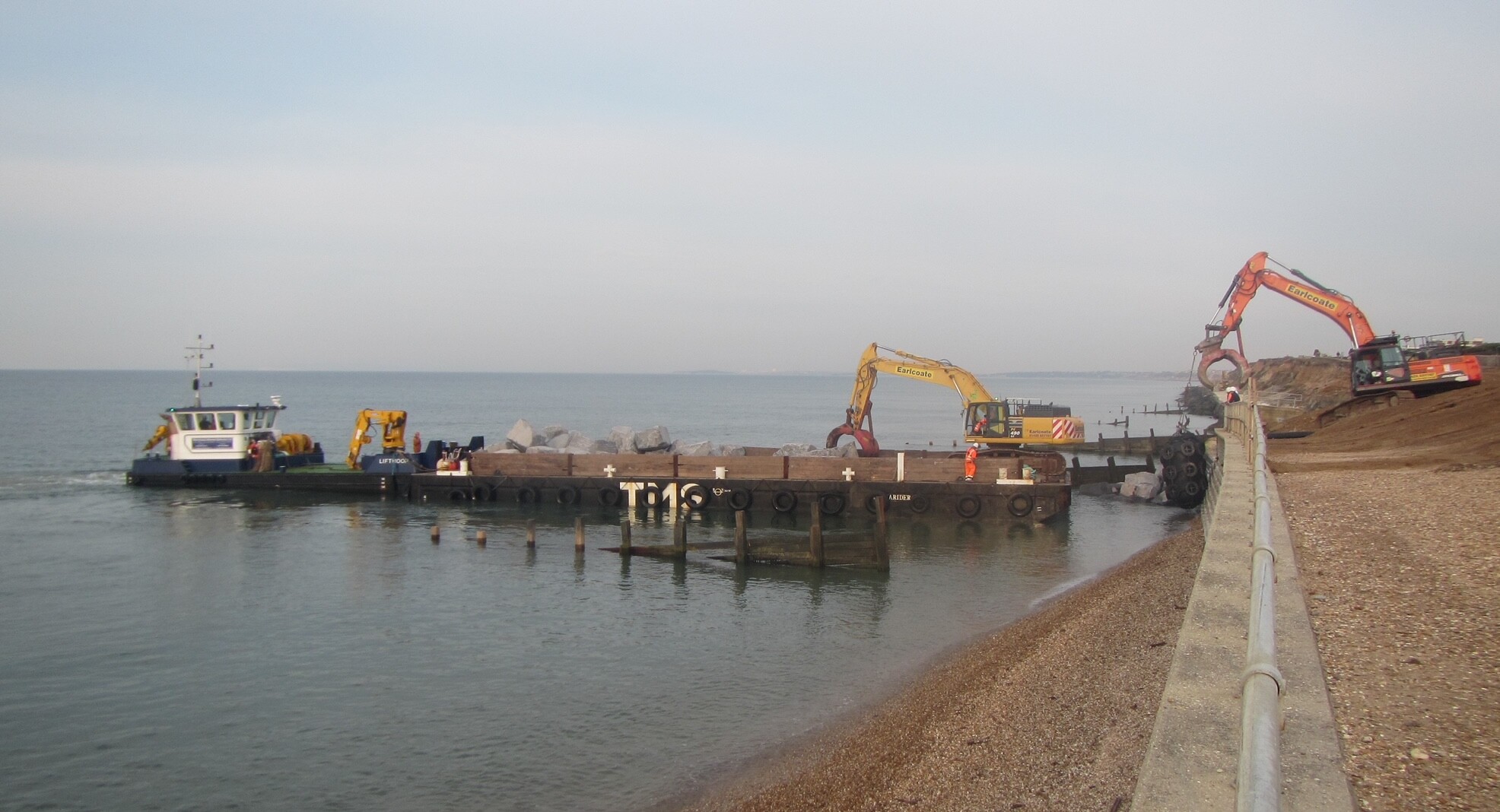
The Liftmoor, a shallow draft multi-category craft, then leaves its berth in Lymington and sails out to rendezvous with the Afon Cefni. The Liftmoor then takes over the positioning of the barge and pushes it closer to the shore to a suitable place for unloading, the reason for using the Liftmoor is because the water draft is very low so they have to be aware of grounding out”.
Once in position unloading commences and the barge mounted PC490LC-11 dispatches the rock on the beach area. At low tide the machines go down to retrieve the rock and they start to build the structure from east to west ongoing, working as and when the tides permit.
To the casual observer there might not appear to be much to the job, but there is no doubt about it, this is technical work and the guys on the job need to be on the top of their game as they not only deal with the job in hand, but also battle with the powerful elements of mother nature.
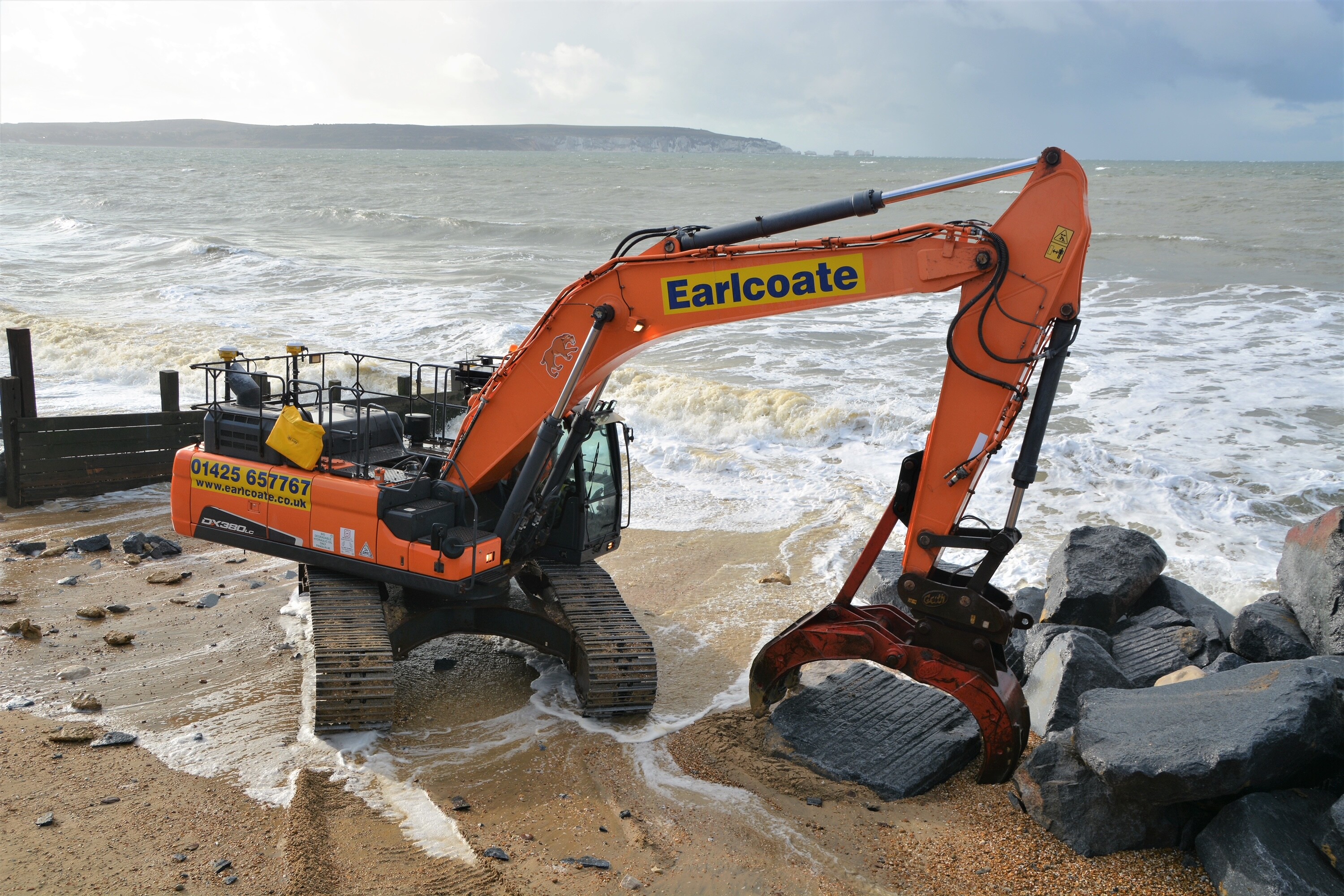
As with many other jobs its all about the preparation in the ground, the kind of stuff you don’t see on the finished product, trenches are dug rapidly and geotextile membrane is secured in place. Its at this point that the rock placing can commence, that in itself is a work of art and requires the very best of skilful operators.
As lead operator Mick Tanner certainly leads the way by example and always has the newest machine, having previously ran the Doosan DX380LC-5 and the Komatsu HB365LC Hybrid, he is now operating the new Komatsu PC490LC-11 which he has specified himself with the MST grab which he says is a brilliant piece of kit.
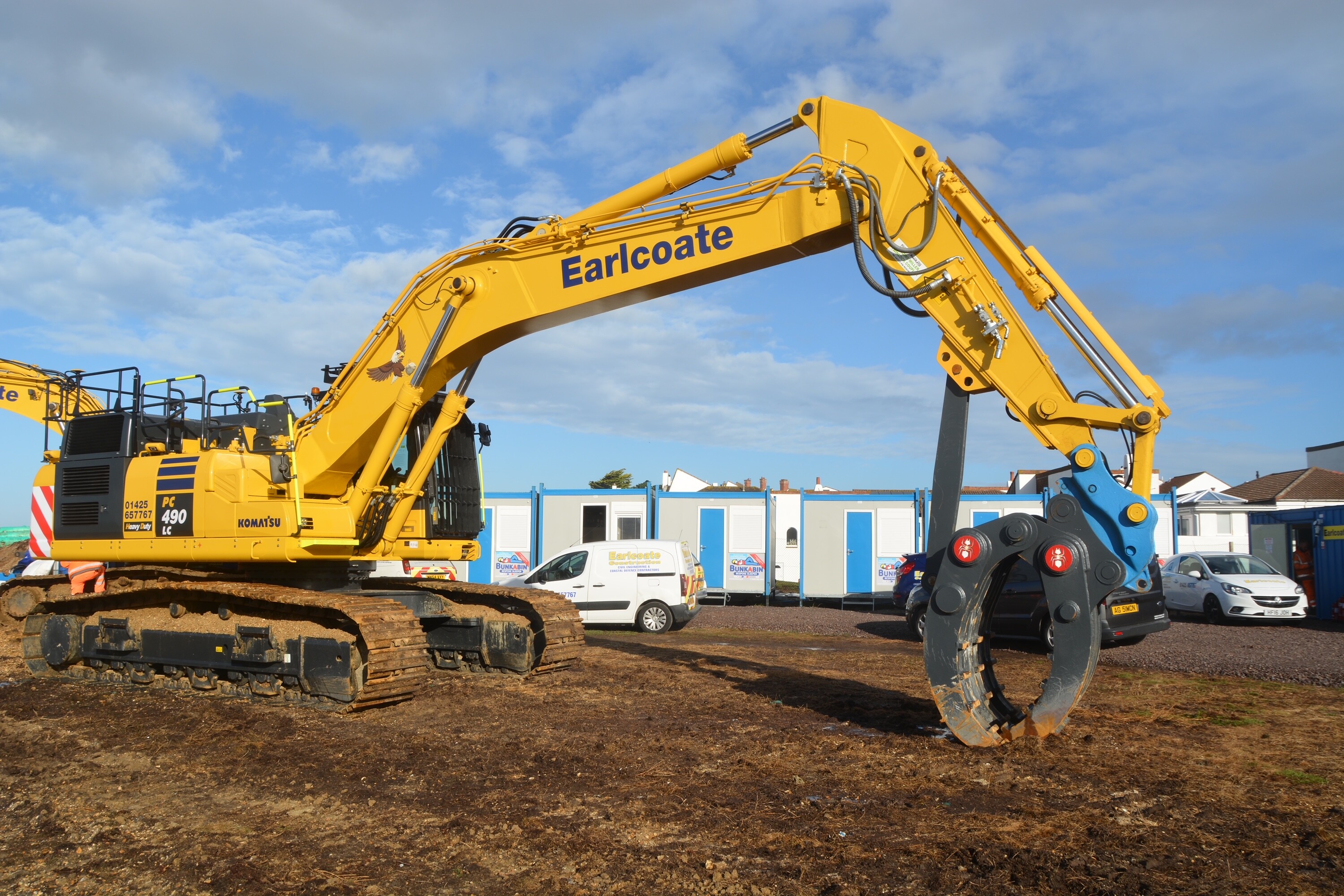
Summarizing Mick said, “We are very specialized at what we do, and there is no 9 to 5 in this game, I have a good team around me and we have the kit we need to get the job done, in addition we have the support from Alister and the team back in the office which is equally important.
A local resident I spoke to while sampling a few beverages the night before my visit suggested that while many locals are delighted to see the action being taken to secure this section of the wall, another 90-metre section further along, is fairing far worse than that on the first phase and they hope that something can be done with that too, a common problem at places around the UK I’m sure.
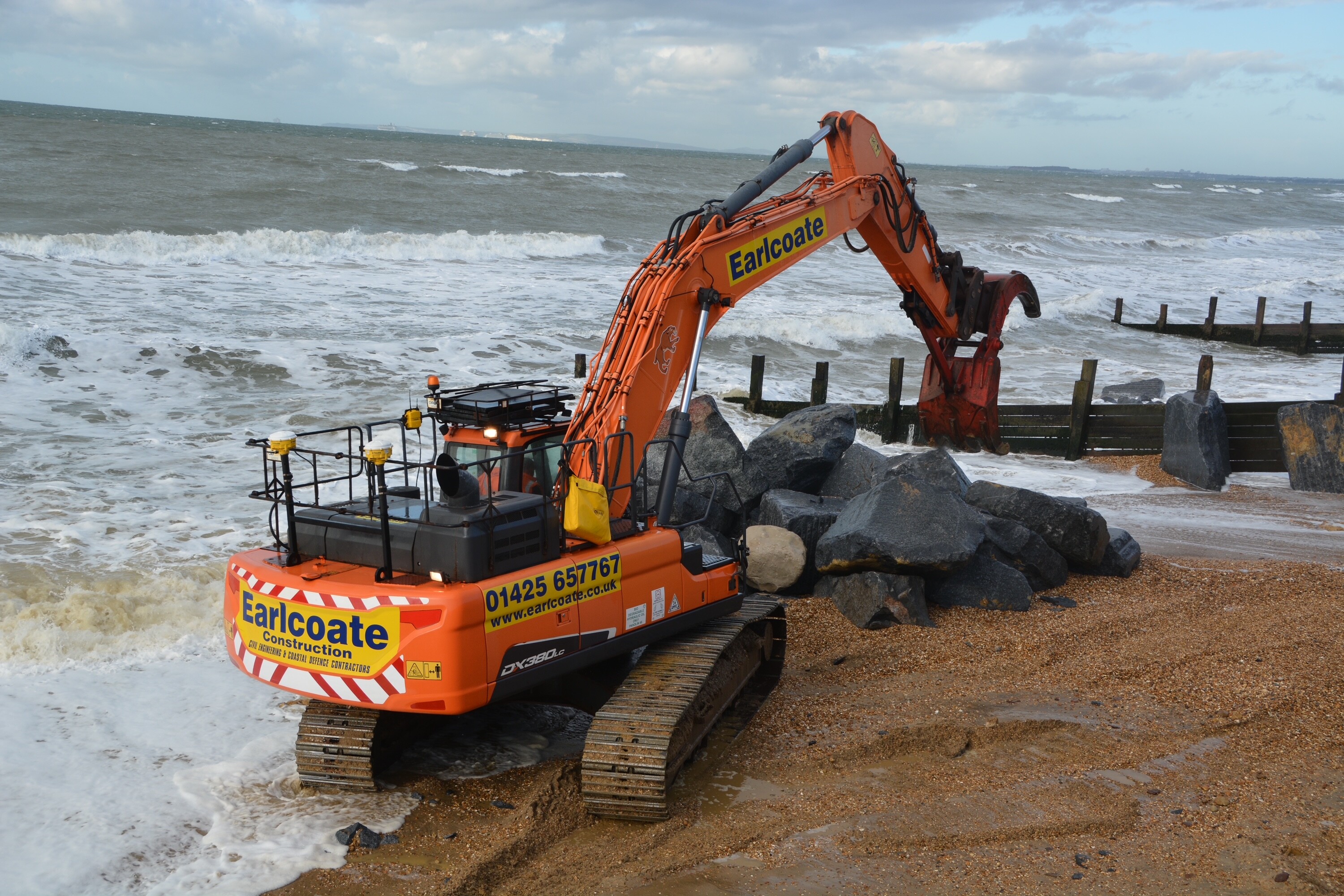
I suspect this top team at Earlcoate will have a presence along this stretch of coast for some considerable time going forward and I hope to return again in the not too distant future.